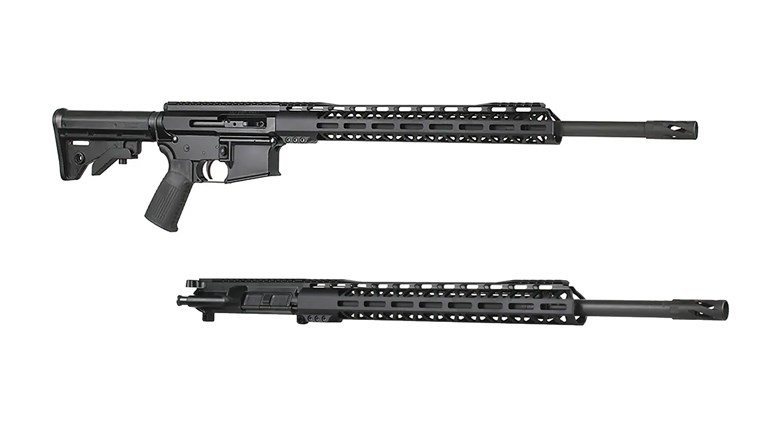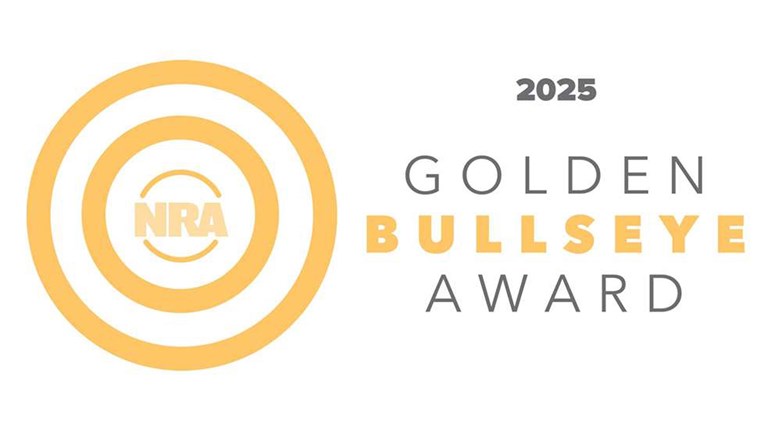
Leupold recently released its Mark 4HD line of riflescopes, claiming this new line to offer many of the features and benefits of its Mark 5HD line at a more affordable price. With MSRPs between $1,000 and $1,600 (depending on magnification), the price tag certainly supports the “more affordable” aspect. But, as Heinlein so succinctly put it, TANSTAAFL: There Ain’t No Such Thing As A Free Lunch. What features are missing from the Mark 4HD line to keep prices down? It really boils down to the high-end extras like dial illumination and the main tube size (the Mark 5HD series offers a 35 mm tube compared to 30 and 34 mm in the Mark 4HD).
You might think that the Mark 4HD line has lower quality glass. You’d be wrong. In fact, you’d even be wrong for thinking that of Leupold’s entry-level VX Freedom line — the glass is pretty much identical across the various lines offered by the company. We saw this firsthand at a media event at the Leupold training facility out in Madras, OR. Leupold cleverly sets out a number of its scopes side-by-side with competitive scopes and had us look through all the scopes at dawn and at dusk (first light/last light) in addition to heavy glare conditions.
And no, Leupold didn’t just pick lower-quality offerings; there were some serious, high-end riflescopes available for us to inspect. Some of them even offered greater clarity and resolution than the Leupold scopes (but not by as much as you might think). One of the most instructive displays, though, placed a VX Freedom scope next to two of Leupold’s higher-end models. While the higher-end scopes had more features, bells and whistles, the optical quality was remarkably similar across the three levels. It’s hard to overstate how much simply looking through various scopes at various ambient light levels can tell you about a scope’s quality. Most scopes look pretty decent in the middle of the day; it’s how they perform at the fringes that differentiates a $300 scope from a $1,000 scope.

We also spent two days having some world-class long-range shooting instruction from several of Leupold’s resident long-range shooting enthusiasts. Using Aero Precision Solus bolt-action rifles chambered in 6 mm Creedmoor, we engaged targets out to 1,100 yards. We confirmed zero at 100 yards, then figured out elevation changes using Hornady’s 4DOF app (see our Ammo Editor’s thoughts on this excellent long-range application). Most of the shooters were able to obtain first-shot hits all the way out to 1,100 yards using the app and the simple adjustments on the Mark 4HD scopes (those that didn’t either didn’t make the correct wind call or, like me, programmed the app incorrectly. Oops.)
One of the features that is included in the Mark 4HD line is one of my personal favorites, the ZeroLock. With a solid 100-yard zero (or whatever distance you’d prefer to use), the turret can be locked at “0” for both windage and elevation. Dial your elevation changes accordingly, then when you’re finished shooting, spin the dial back to “0,” where it stops. No worries about bumping the dial inadvertently or accidentally setting it in the wrong spot. Just be sure your dope at the “zero” point is spot-on, and you can dial away for whatever range you desire.
There’s another clever feature in the Mark 4HD scope line: there are rotational indicators. At the zero point through the first rotation, the M5C3 lock button sticks out a bit from the turret. After the first full rotation of the dial, the button resets to be flush with the turret, and on the third rotation, the button actually recedes into the turret. At a glance—or feel—you can tell what level of rotation the dial has undergone and make changes accordingly. This is much faster than spinning it all the way back to the zero point and starting over because you couldn’t remember if the dial had gone completely around once … or twice.
Using the 6x24x52mm Mark 4HD scope at the Leupold range, we engaged in some PRS-style competition once finished on the known-distance range. Targets were scattered throughout, and we’d be given a distance only—it would be up to the individual shooter to discern the wind call (spotting is hard!). Whether the shooter chose to dial the scope according to the 4DOF app or simply use the holdover was a matter of individual preference, and I opted to try it each way to see which worked better.
It is, as is much in the shooting world, a delicate balance of speed and precision. Dialing is more precise; using holdovers is faster. While I made more hits when dialing for the various distances, I ran out of time; when using holdovers I finished the course in the par time, but had three misses out of 10. I don’t recall the exact scoring setup; there were several far more accomplished long-range shooters in our group so I was in absolutely no danger of being at the top of the group anyways. Regardless, it’s still a heck of a lot of fun, and being able to ring steel at a quarter mile, then pushing back even farther is a serious test of one’s marksmanship basics.
What’s the bottom line on the Mark 4HD riflescope? Plain and simple, it just works. Whether dialing or using holdovers, the 6-24X scope we had on the Solus rifles provided a sharp picture of the target and made hits at distance easy. Even under the pressure of a “friendly” competition, the clarity of the scope and the precision of the dials ensured the only misses were the fault of the person pulling the trigger. While the Mark 4HD might not have the same level of extras as the Mark 5HD, it’s got the basics down solid, and that’s what really counts.




































